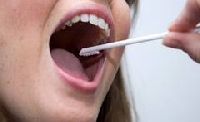
DNA tests determine parentage, genetic genealogy and who is at risk for disease
Who uses DNA tests? A lot of people, for various reasons: parentage, inherited diseases, genealogy and more.
Sometimes the parentage of a child is in question and needs to be determined. In this case, an analysis is done. A parental DNA analysis is the method of using genetic fingerprinting to ascertain if an individual has a biological parent-child relationship with the child. When it is a paternity assessment, this provides genetic proof a man is the biological father. A maternity test shows if a woman is the biological mother.
The probability of parentage is zero percent if the person is not biologically linked to the child. The probability of parentage is 99.9 percent when the person is biologically related to the child.
However, keep in mind some people, although rare, have at least two different sets of genes called chimeras. This can lead to a false negative outcome if that person’s reproductive tissue is genetically different from the tissues sampled.
~
To perform a DNA paternity or maternity analysis, the adult and child’s inside cheeks are swabbed. Swabbing the inside of the cheeks collects Buccal cells. The cells are sent to a lab.
Laws regarding this type analysis vary from country to country. In the United States, a father can test his children without telling the mother of the children. However, the results will not hold up in court. Only paternity tests that are court-ordered are considered evidence.
Prenatal
Even before a child is born, he can be genetically analyzed. The infant’s DNA is acquired through a CVS sample or amniocentesis, which produces accurate paternity outcomes and can also reveal if the baby has a disease. However, there is the risk of miscarriage when this is done.
Ethnicity
DNA analysis can be used to determine one’s ethnicity. Those interested in genealogy may opt to do this. This is called genetic genealogy. The analysis shows who your ancestors were between 50,000 and 200, 000 years ago. Changes, although small, occurred in DNA as people migrated out of Africa into the remainder of the word. These changes are called mutations.
Taking this assessment reveals some fascinating things about a person. For example, you can discover who your most recent common ancestor (MRCA) is. This is a gauge of up to how long ago two lines (two people) shared a common ancestor. If you and your spouse have a match at 20 markers this indicates your MRCA is narrowed down to 8.3, meaning you and your spouse are most likely from the same line. Your MRCA is between 0 and 8.2 generations ago. And maybe you didn’t want to know that! Kissin’ cousins.
Immigration
When there is no overt way to establish blood relationships between people in the immigration/visa process, this analysis is useful. it determines paternity, maternity, full siblings and half siblings.
Genetic Predisposition
Some couples wishing to conceive a baby choose to undergo predisposition analysis, particularly if they know a certain disease is prevalent int heir families but do not know if they are carriers. The analysis reveals their risk factor as well as the likelihood they will pass on these genes to their children.
For example, a couple can learn if they are carriers of Tay-Sachs, which is a fatal disease common among Eastern Europeans (Jewish.) The results show how much Hex-A is in a person’s blood. Those who are carriers have less Hex-A than non-carriers.
BRCA1 and BRCA2
The analysis can be done if a person wants to know if he is at high risk for a specific disease. DNA for BRCA1 and BRCA2 determines if a woman or man is at high risk of acquiring breast cancer. For women, it also determines if she is at risk for ovarian cancer. When a person discovers he does have the mutation, some opt for full mastectomies as well as have their ovaries removed. Actor Angelina Jolie. has been very public about carrying the BRCA gene and undergoing preventive surgery as a result.

